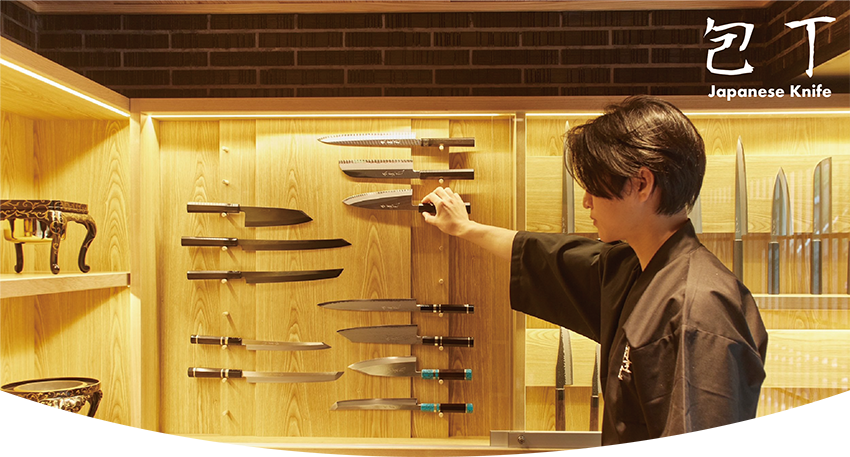
○和包丁の豆知識
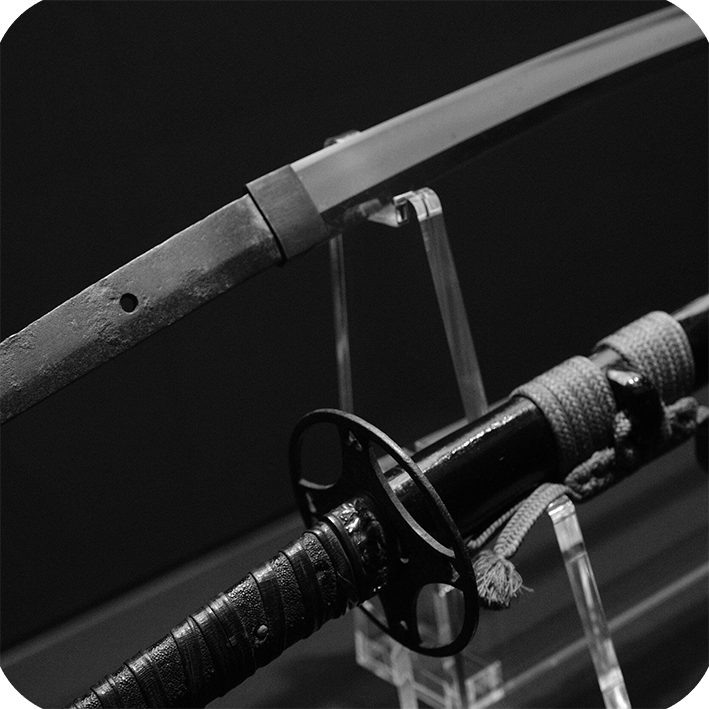
ナイフの起源は?
日本のナイフの起源は、武士の刀づくりの伝統にまで遡ることができます。 熟練した刀鍛冶がその専門知識を応用して、同様の精度と職人技を備えた包丁を作りました。 時間が経つにつれて、特定の料理用途に合わせたさまざまなスタイルの和包丁が開発されました。
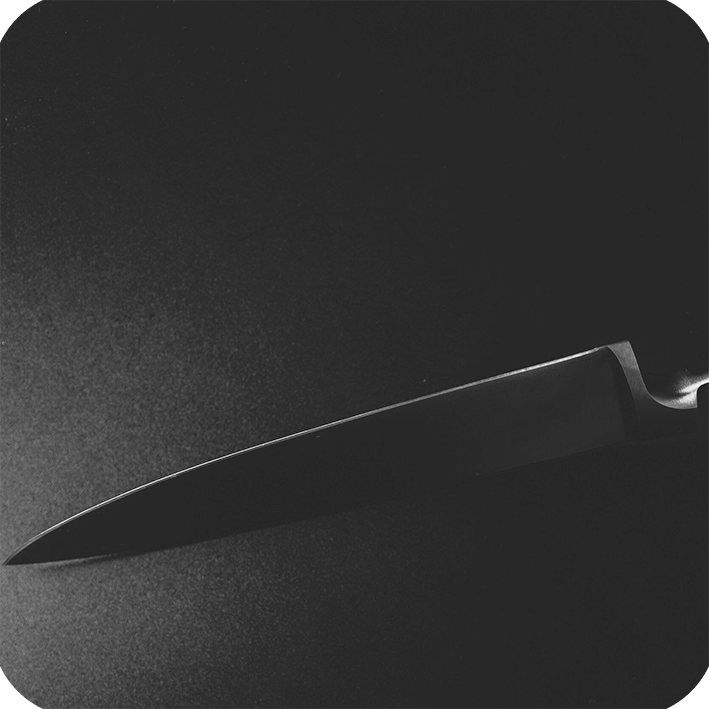
鋼製ナイフとの違いは何ですか?
ステンレス鋼のナイフは、鉄、炭素、クロム、その他の金属の混合物で作られています。 クロムの添加により耐食性が向上し、ステンレス鋼のナイフは従来の鋼製ナイフに比べて錆びたり汚れたりしにくくなっています。 これにより、ステンレス鋼のナイフのメンテナンスが容易になり、湿度の高い環境での使用に適しています。
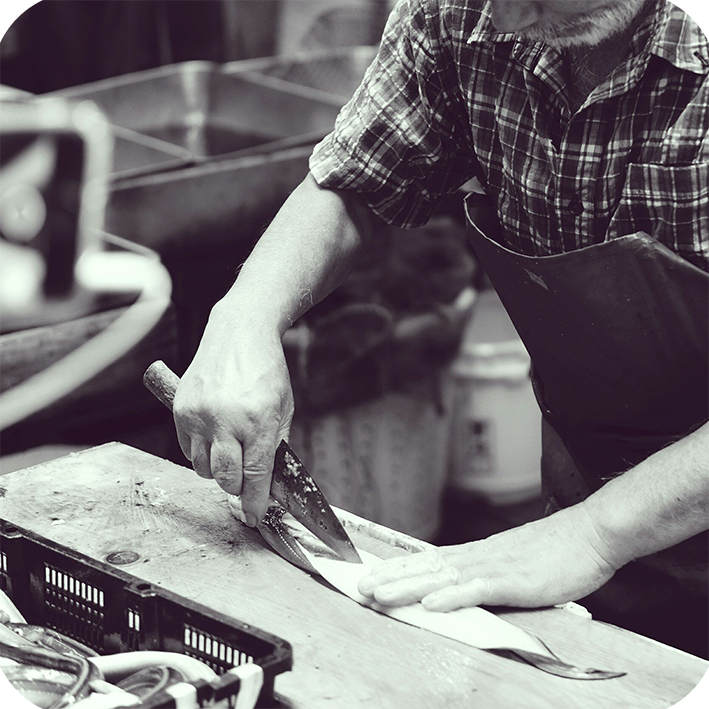
何にでも使えるナイフは何ですか?
牛刀や三徳などの万能包丁は、キッチンの幅広い作業に最適な選択肢と考えられています。 これらのナイフは、さまざまな切断、みじん切り、スライス、角切りなどの作業を簡単に行えるように設計されており、キッチンのほぼすべての用途に適しています。牛刀や三徳などの万能包丁は、キッチンの幅広い作業に最適な選択肢と考えられています。 これらのナイフは、さまざまな切断、みじん切り、スライス、角切りなどの作業を簡単に行えるように設計されており、キッチンのほぼすべての用途に適しています。
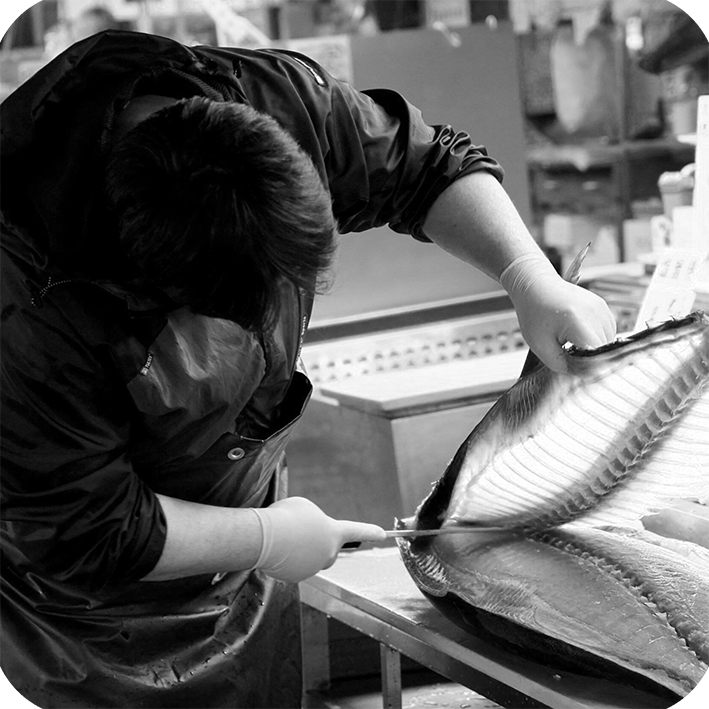
The difference between Santoku and Gyuto knives
Santoku knives typically have a shorter, wider blade with a flat edge, making them ideal for chopping and slicing. Gyuto knives have a longer, narrower blade with a curved edge, offering more versatility for slicing, dicing, and precise cutting tasks.
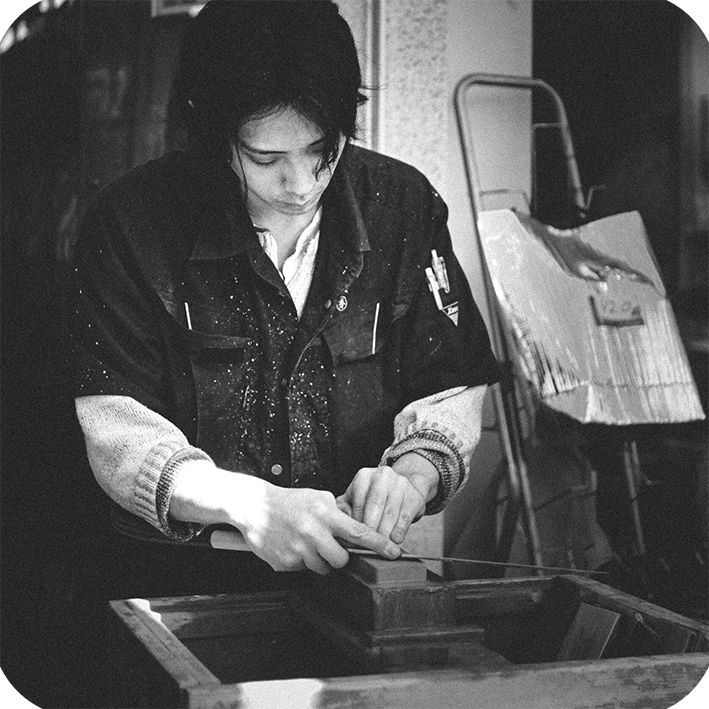
What is a 3-layer structure?
A three-layer structure in knife-making refers to a construction method where the blade consists of three layers of different types of steel. The core layer, known as the "hagane," is often a harder steel that retains a sharp edge well. Surrounding the core are two layers of softer steel, known as the "jigane," which provide flexibility and durability to the blade. This combination of hard and soft steel layers creates a blade with excellent edge retention and strength, making it a popular choice for traditional Japanese knives.
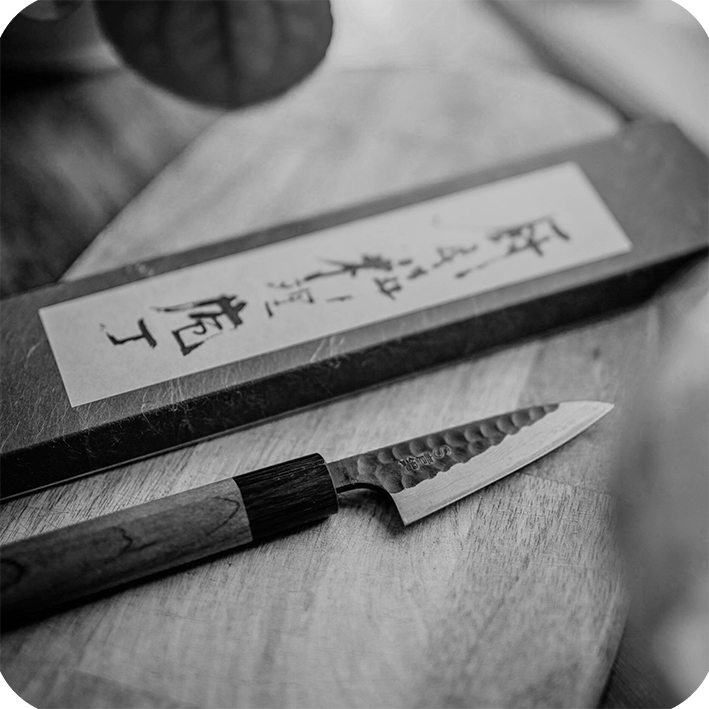
What is this pattern?
The Damascus pattern seen on knives is achieved by layering and folding steel during the forging process, creating a visually striking wavy or mottled design. This technique not only adds aesthetic appeal but also contributes to the blade's strength and durability, as the multiple layers of steel enhance its structural integrity and resistance to wear.
和包丁の種類
各種の和包丁は、料理する食材の加工用途によって使い分けられます。
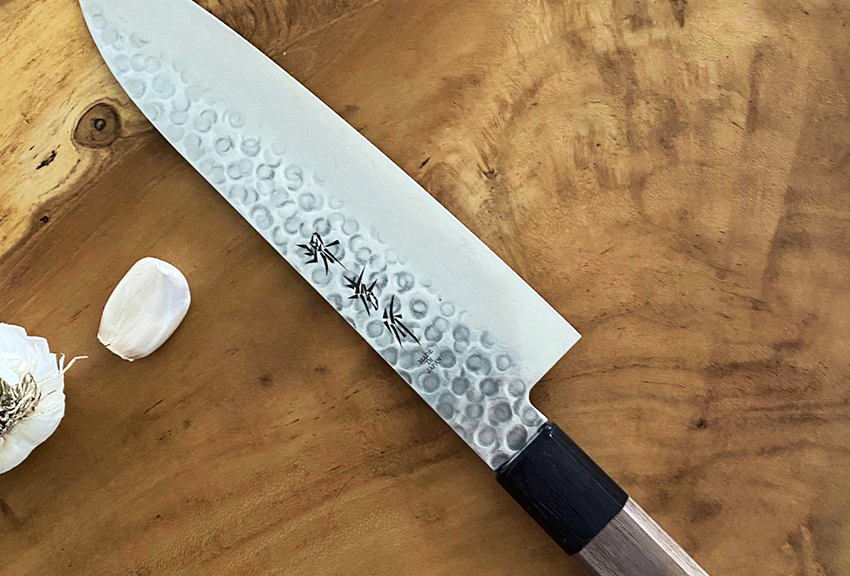
三徳包丁
日本の伝統的な包丁製造技術とこの万能刃の進化を掘り下げて、三徳包丁の伝統と職人技について学びましょう。 キッチンでの可能性を最大限に引き出すために、さまざまな切断技術やレシピを試して、その多様な料理への応用を探ってください。
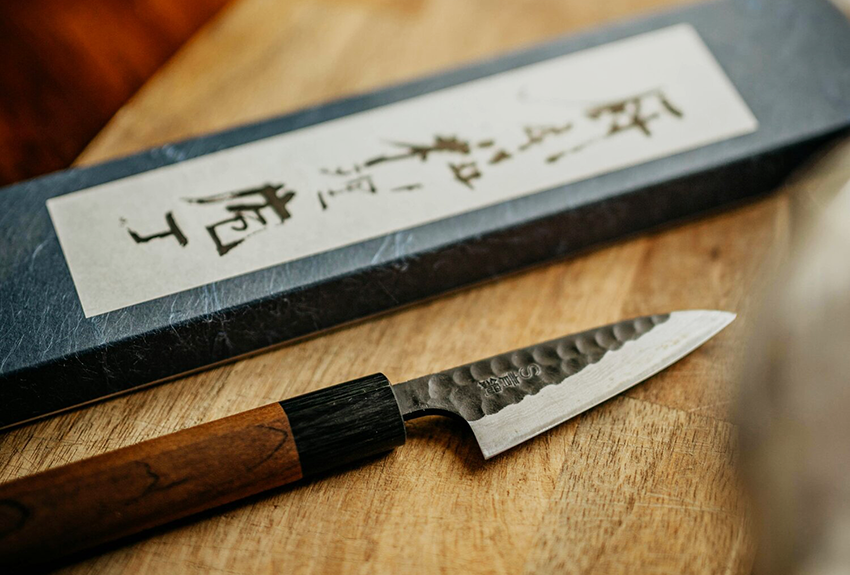
ペティーナイフ
ペティナイフのユニークなデザインとキッチンでの多彩な用途を探って、ペティナイフについて詳しく学びましょう。 軽快なサイズと正確な刃が、ハーブのみじん切り、果物の皮むき、ニンニクの繊細なスライスなど、複雑な切断作業に不可欠なツールであることをご覧ください。
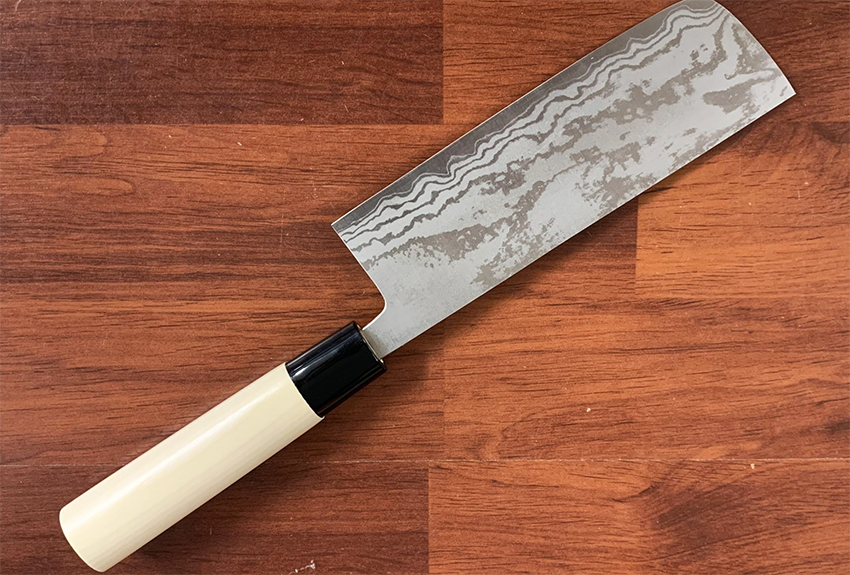
Usuba Knife
Learn about the precision of the Usuba, a Japanese knife designed for flawless vegetable preparation, ensuring culinary artistry with every slice.
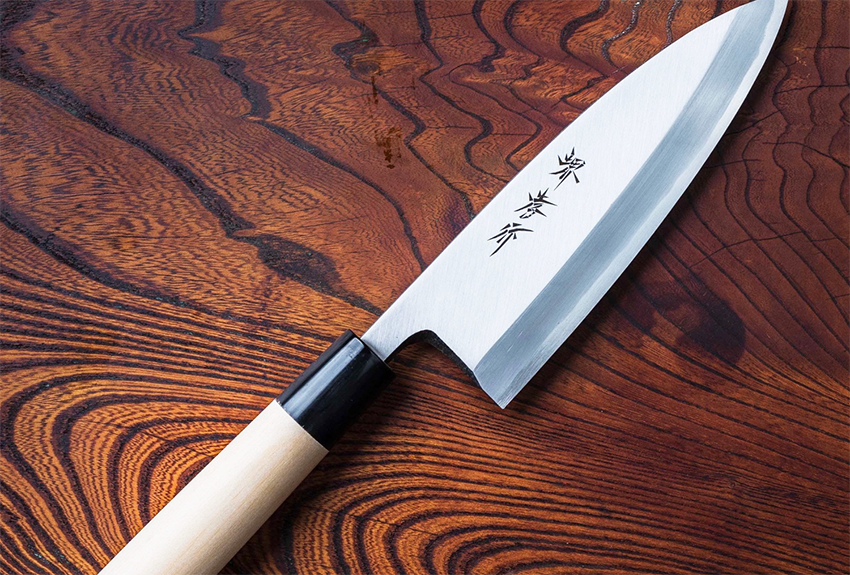
Deba Knife
The Deba knife is a traditional Japanese kitchen knife that typically features a thick, sturdy blade that allows for precise and clean cuts through fish bones and meats. It is used to primarily filet and butcher fish.
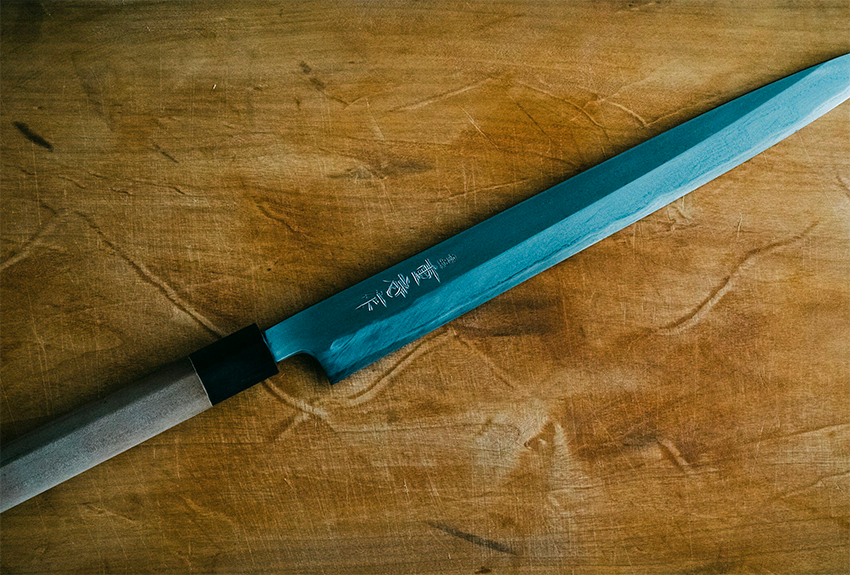
Yanagiba Knife
The Yanagiba knife's long slender blade and single bevel edge ensure precise slicing of delicate ingredients like sashimi with unparalleled finessed.
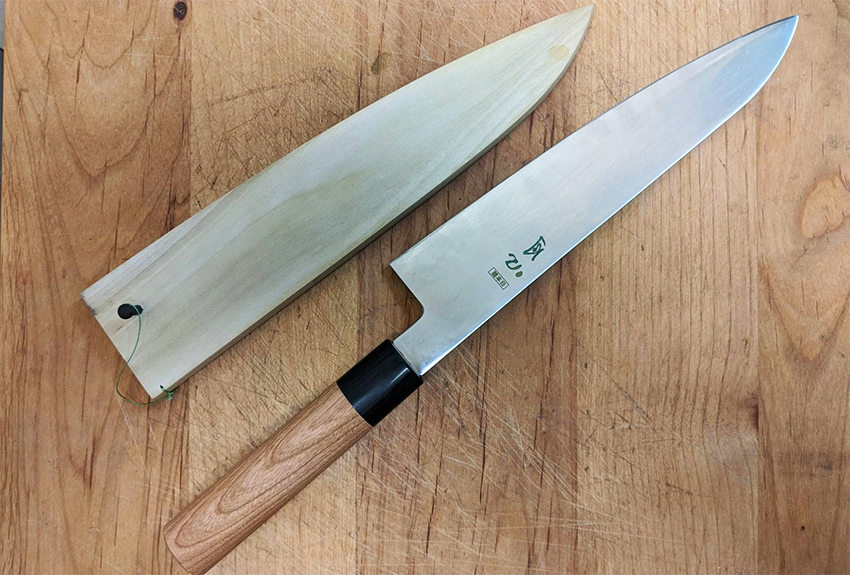
Wa-Gyuto knife
The Wa-Gyuto knife combines Japanese tradition with Western innovation, boasting a blade for precise cutting with its one-sided blade that’s used for vegetable chopping to delicate meat slicing.
>>>Go to the Japanese knife EC shop<<<
(バナー作成)